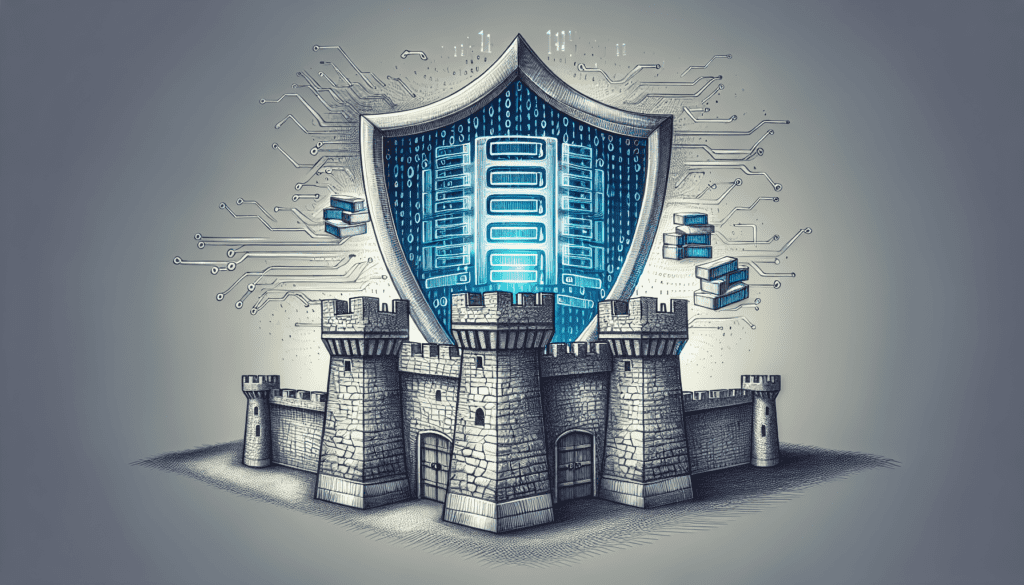How To Protect Your Server From DDoS Attacks
Have you ever experienced a Distributed Denial of Service (DDoS) attack on your server? If so, you know how disruptive and damaging it can be to your website or online services. In this article, we will guide you on how to protect your server from DDoS attacks to ensure the security and stability of your online presence.
Understanding DDoS Attacks
DDoS attacks are malicious attempts to disrupt the normal traffic of a targeted server, service, or network by overwhelming it with a flood of internet traffic. This flood of traffic can be so overwhelming that it causes the server to become unresponsive, leading to downtime and potential financial losses. Understanding the different types of DDoS attacks and how they work is crucial to implementing effective protection measures.
Types of DDoS Attacks
There are several types of DDoS attacks, each with its own unique characteristics and methods of execution. Some common types of DDoS attacks include:
- Volumetric Attacks: These attacks flood the target server with a large volume of traffic, overwhelming its bandwidth capacity.
- TCP State Exhaustion Attacks: These attacks exploit vulnerabilities in the TCP handshake process, exhausting the server’s resources.
- Application Layer Attacks: These attacks target specific applications or services on the server, such as HTTP or DNS, with the goal of disrupting their functionality.
By understanding the various types of DDoS attacks, you can better prepare your server for potential threats and vulnerabilities.

Implementing DDoS Protection Measures
Protecting your server from DDoS attacks requires a combination of proactive measures and reactive strategies to ensure the security and stability of your online services. By implementing the following protection measures, you can minimize the risk of a successful DDoS attack on your server.
Network Security
Ensuring the security of your network infrastructure is essential in protecting your server from DDoS attacks. By implementing robust network security measures, such as firewalls, intrusion detection systems (IDS), and virtual private networks (VPN), you can filter out malicious traffic and prevent unauthorized access to your server.
Traffic Monitoring and Analysis
Regularly monitoring and analyzing your server’s traffic patterns can help you detect and mitigate potential DDoS attacks before they cause significant damage. By using network monitoring tools and intrusion detection systems, you can identify abnormal traffic patterns and take immediate action to block malicious traffic.
Content Delivery Networks (CDNs)
Content Delivery Networks (CDNs) can help protect your server from DDoS attacks by distributing your content across multiple servers geographically. By spreading the load of incoming traffic across different server locations, CDNs can absorb and mitigate DDoS attacks, ensuring the continued availability of your online services.
Rate Limiting
Implementing rate limiting on your server can help protect it from DDoS attacks by limiting the number of requests that a client can make within a specified time frame. By setting thresholds for incoming traffic and blocking excessive requests, you can prevent your server from becoming overwhelmed by DDoS attacks.
Cloud-Based DDoS Protection Services
Cloud-based DDoS protection services can provide an additional layer of security for your server by filtering out malicious traffic before it reaches your network. By leveraging the scalability and global infrastructure of cloud-based services, you can ensure the continuous availability of your online services during DDoS attacks.
Web Application Firewalls (WAF)
Web Application Firewalls (WAFs) can help protect your server from DDoS attacks by filtering out malicious traffic at the application layer. By inspecting incoming traffic for suspicious patterns and blocking malicious requests, WAFs can effectively mitigate DDoS attacks and ensure the security of your online applications.
Disaster Recovery and Incident Response Plans
Having a robust disaster recovery and incident response plan in place is essential in minimizing the impact of DDoS attacks on your server. By documenting the necessary steps to recover from a DDoS attack and responding to incidents promptly, you can minimize downtime and ensure the continuity of your online services.
Collaboration with Internet Service Providers (ISPs)
Collaborating with your Internet Service Providers (ISPs) can help you protect your server from DDoS attacks by leveraging their network infrastructure and resources. By working closely with your ISPs to implement traffic filtering and mitigation strategies, you can enhance the security and resilience of your server against DDoS attacks.

Conclusion
Protecting your server from DDoS attacks is essential in maintaining the security and stability of your online services. By understanding the different types of DDoS attacks, implementing proactive protection measures, and having a robust incident response plan, you can minimize the risk of falling victim to a DDoS attack. Remember, staying vigilant and proactive in monitoring your server’s traffic patterns is key to protecting it from potential threats and vulnerabilities. By following the tips and strategies outlined in this article, you can safeguard your server from DDoS attacks and ensure the uninterrupted availability of your online services.









